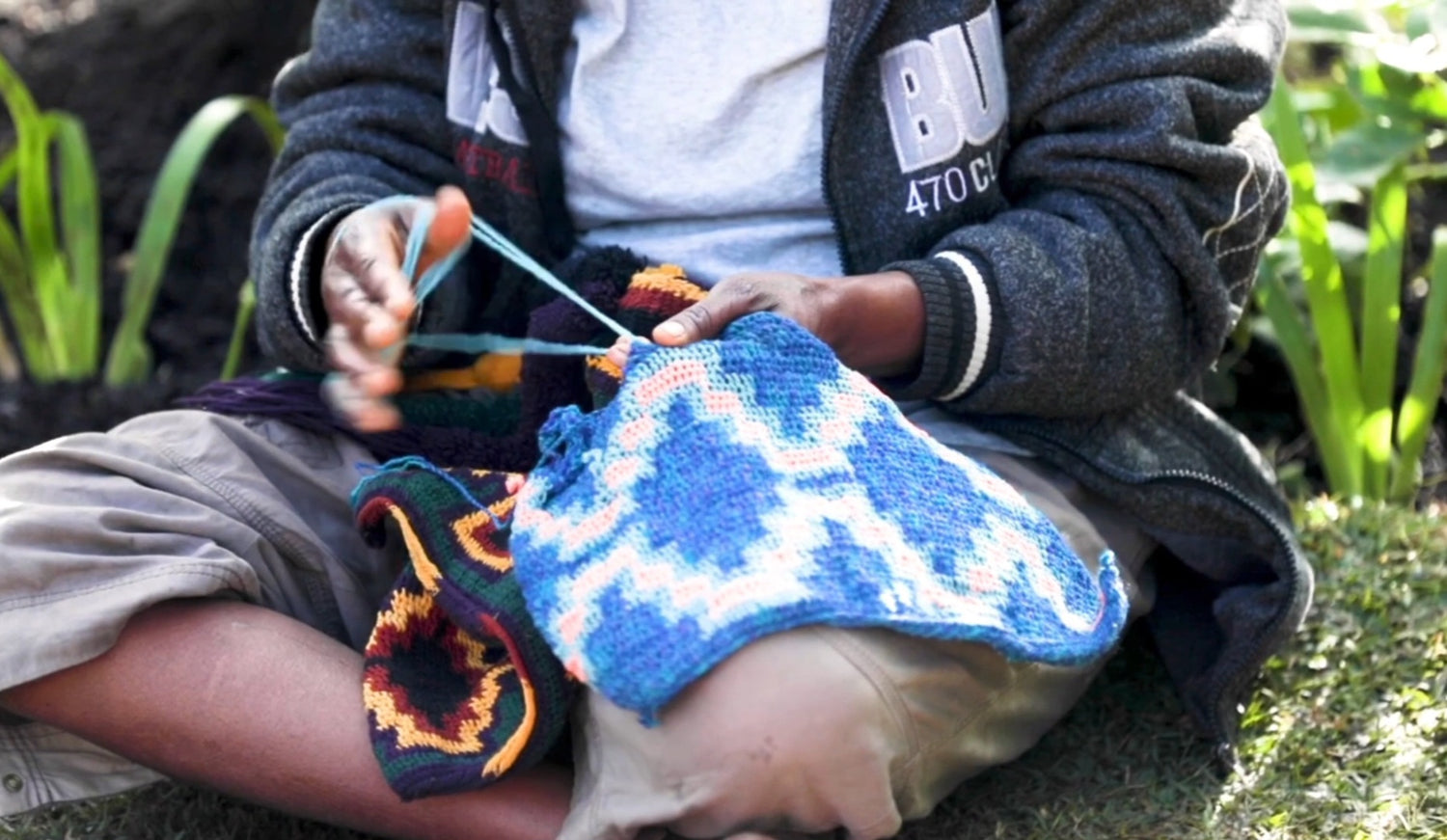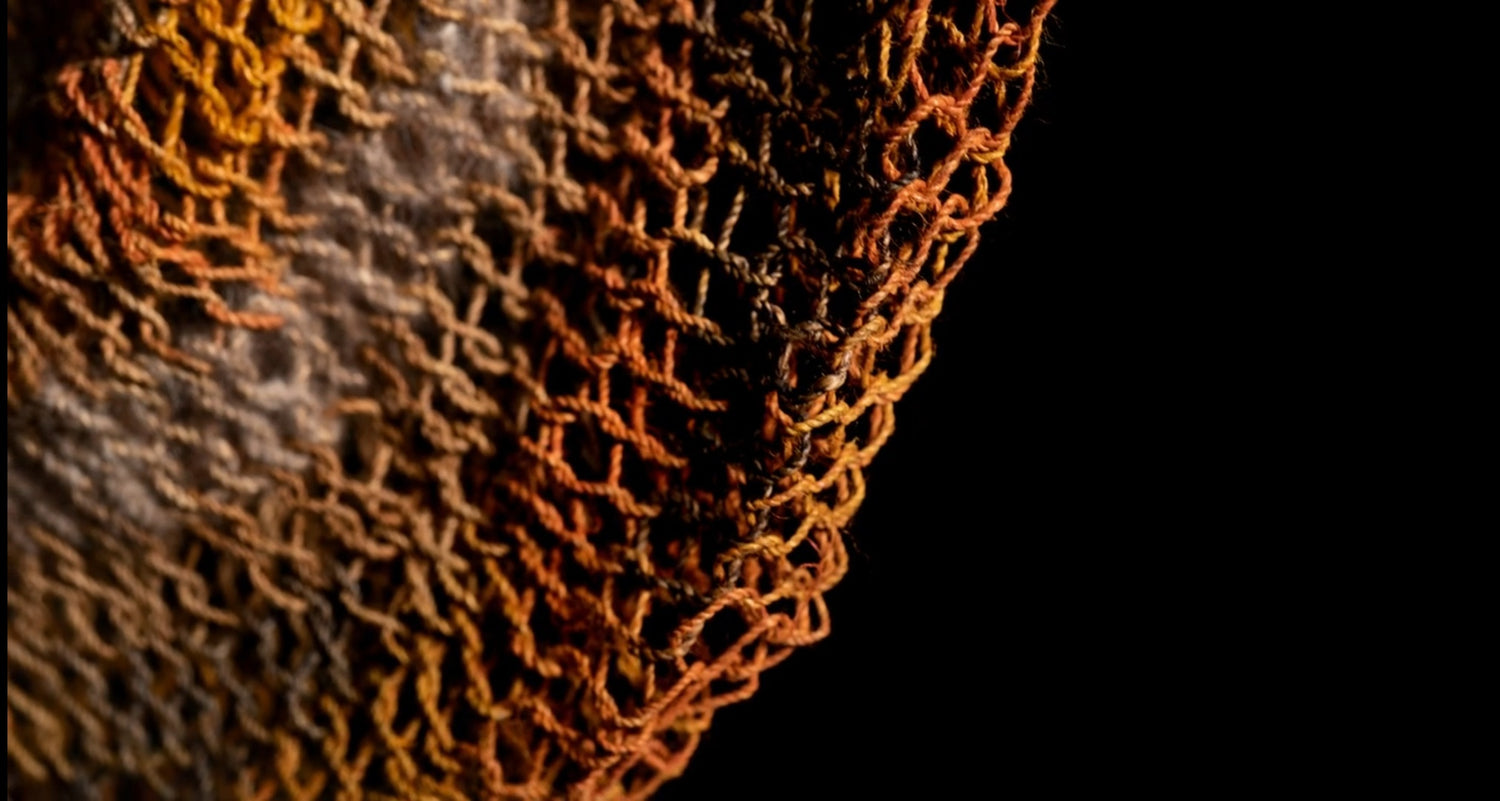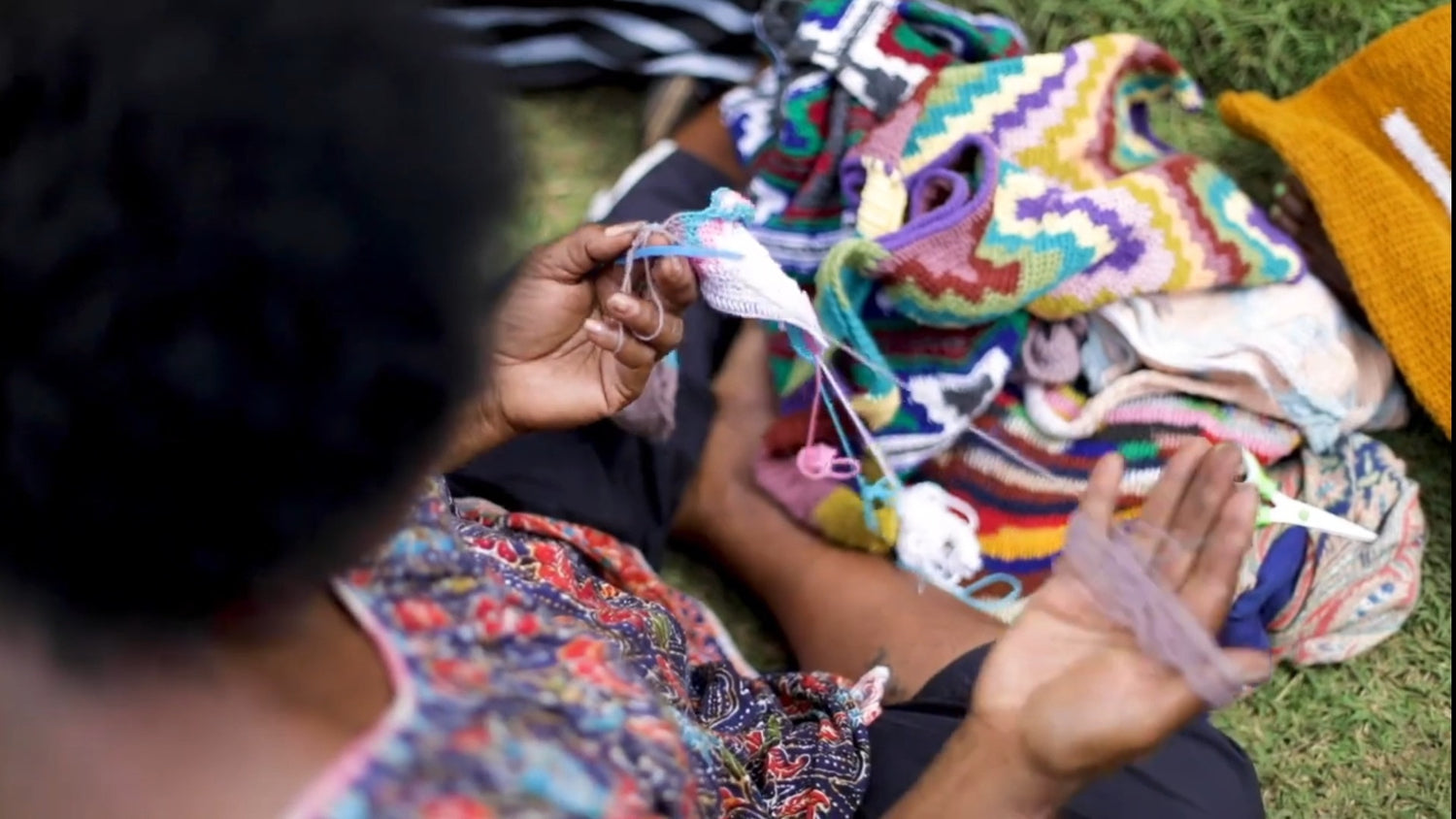
What is a bilum?
Bilums are traditional, handwoven bags made by women across Papua New Guinea using a unique looping and twisting technique passed down through generations. More than just bags, bilum means "womb" in Tok Pisin — a symbol of life, strength, and connection.
Originally crafted from natural plant fibres, today's bilums are also made with vibrant acrylic and wool yarns. Used to carry everything from market goods to babies, they are practical, deeply cultural, and often gifted to mark love, kinship, and important life moments.
Every bilum carries a story — of heritage, craftsmanship, and the hands that wove it.

How is a Kambot bilum made?
Bark Harvesting – It all starts with the bark of trees like Rumia, Gomba, and Mangas, skillfully stripped by hand.
River Soaking – The bark is soaked in river water for days to naturally soften the fibres.
Natural Dyeing – Soft fibres are dyed in black swamp mud, giving them their rich, earthy tones.
Sun-Drying & Twisting – After drying under the sun, fibres are hand-twisted into strong, rope-like threads.
Weaving the Bilum – With patience and precision, artisans weave each thread into a bilum – a functional piece of art rooted in heritage.

How is a bilum woven?
Each bilum is a one-of-a-kind creation, handwoven by women from regions throughout Papua New Guinea. Using traditional looping and twisting techniques, artisans transform foraged fibres or vibrant yarns into culturally significant bags that symbolise strength, identity, and heritage. Depending on the intricacy, a single bilum can take six to eight weeks to complete — a labour of love shaped by the weaver’s hands and home.
